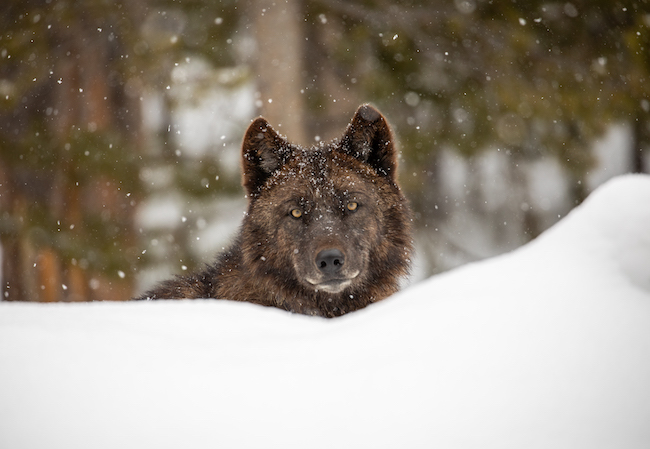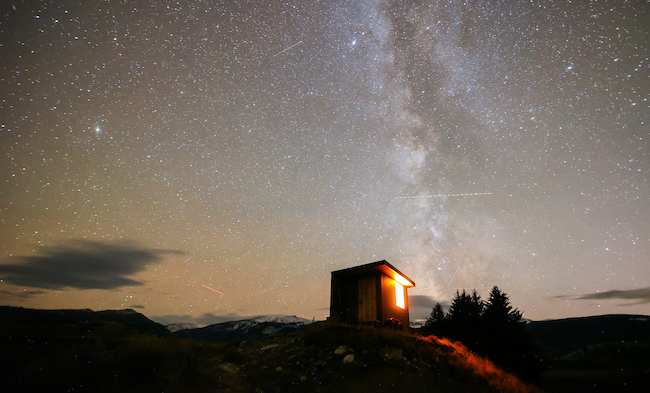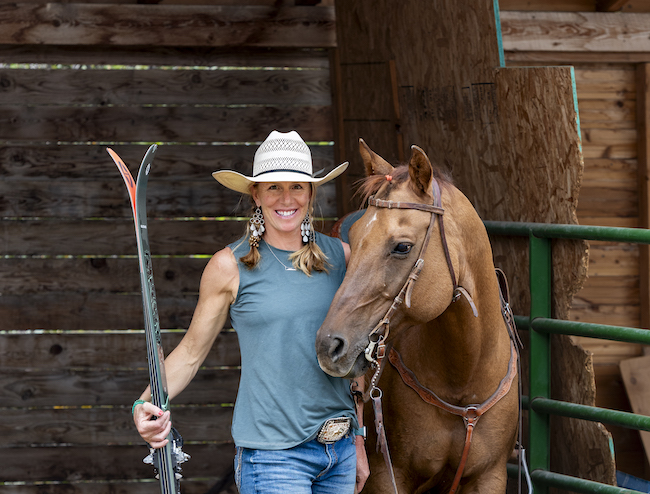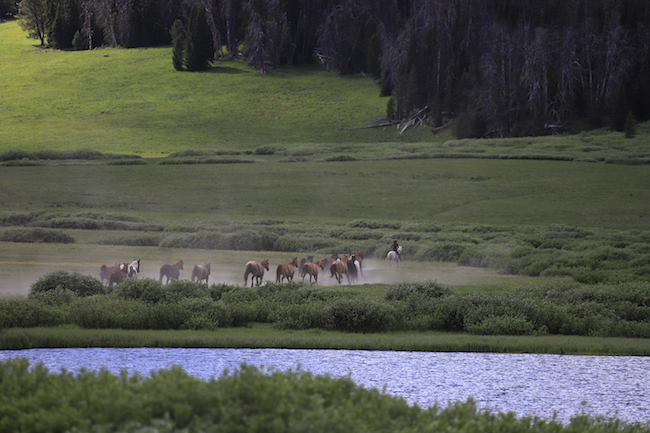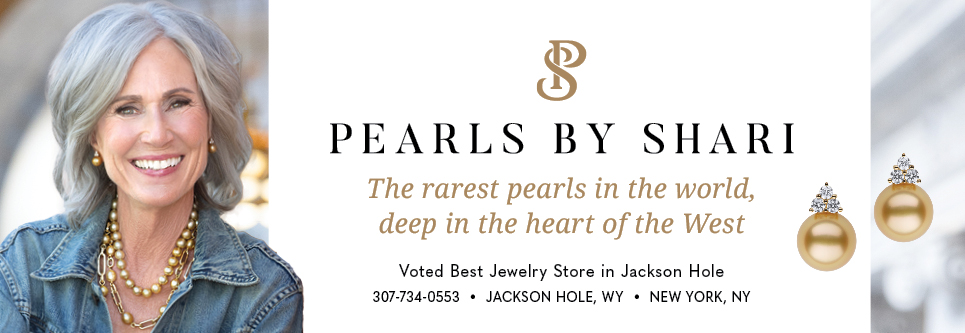Legendary Jackson Hole Trailblazers
28 Jan 2024
From conservation efforts to ski tourism, these visionaries forged the path to our present
Winter/Spring 23-24
Written By: Heather Jarvis | Images: Collection of the Jackson Hole Historical Society and Museum
Whether it’s the inspiring peaks of the Tetons, the serene beauty of the landscape, or the community, Jackson Hole has long drawn the intrepid, the bold, the conquerors,
the doers. Early settlers braved harsh, isolated winters. Ranchers forged ahead into a new frontier with tourism. Passionate visionaries built a skier’s dream. And now, Jackson Hole hosts a new breed of talent, a collection of citizens with extreme athleticism, creativity, foresight and determination.
Along the way, there were plenty of innovators who helped transform Jackson Hole from the rough and tumble Wild West town into what it is today — a playground for billionaires, a sanctuary for the adventurous, a home for the driven. As with many mountain towns, only the most determined were able to thrive year-round, but those who did built — with hard work and grit — what many view as a paradise. It takes a village to build a strong community, and many previous residents are to be thanked for making — and preserving — Jackson Hole into what it is today. Here we’ve compiled a few notable trailblazers whose vision for the future created our present.
Wyoming Leads on Women’s Rights
In 1869, Wyoming became the first state or territory in the nation to grant voting rights to women with the passing of the Women’s Suffrage Act, a solid 51 years before the U.S. Constitutional amendment, giving Wyoming its nickname, “The Equality State.” It also gave women the rights to hold public office, own and inherit property, and the guardianship of minor children.
This eventually led to the inspiring “petticoat rulers” in 1920, in which the town of Jackson voted for an all-women town council ticket. Not only did Jackson receive plenty of nationwide press for the occurrence, but these female leaders made waves, substantially increasing the town’s coffers by collecting unpaid taxes and using the funds to “clean up” a Wild West community. The women leaders accomplished more in six months than their male predecessors had done in six years, and the entire ticket gained a second term.
John D. Rockefeller, Jr.
When it comes to conservation, it is easily argued that no one had more influence on the landscape of the Tetons than John D. Rockefeller, Jr. While the wealthy philanthropist’s contributions to the now 310,000-acre Grand Teton National Park are enjoyed and cherished by visitors and locals today, his preservation efforts set off roughly two decades of fierce controversy between local and federal stakeholders.
In the early 1920s, conservationists and members of the National Park Service had hoped to conserve part of the Jackson Hole area as a national park. Even ranchers were becoming increasingly alarmed as new development and growing commercialization began to change the natural landscape, and those who were in the dude ranch business wanted to preserve the “Old West” experience for their guests. But many other ranchers opposed the idea, concerned it would restrict grazing rights.
It was in 1926 that Rockefeller visited Jackson Hole and, like many, was inspired by the natural beauty of the area. At the urging of Horace Albright, superintendent of Yellowstone National Park and future director of the National Park Service, he created the Snake River Land Company in 1927 to maintain anonymity, with the goal of acquiring private land to donate to the government. He began quietly purchasing land from local ranchers, many who were experiencing tough times as the demand for beef declined after World War I. At the same time, in 1929, President Calvin Coolidge created the 96,000-acre Grand Teton National Park.
A local backlash erupted once Jackson Hole residents became aware of Rockefeller’s involvement and intentions in 1930. Wyoming’s congressional delegation blocked attempts to expand Grand Teton National Park to include the Jackson Hole area, and only when Rockefeller threatened to sell the 35,000 acres he had purchased for the park did the federal government step in. President Franklin D. Roosevelt used the Antiquities Act of 1906 to create the Jackson Hole National Monument in 1943, and in 1950, the land was added to the boundaries of Grand Teton National Park. The inclusion frustrated many who were vehemently opposed to the president’s use of the Antiquities Act, which they felt bypassed the normal democratic process. However, concessions were made to park opponents, including an article forbidding the future use of the Antiquities Act in Wyoming to create national monuments without the consent of Congress. Rockefeller continued to buy and donate land to the park until his death.
Previous NextVirginia Huidekoper
From Salt Lake City, Utah, Virginia Huidekoper dropped out of college her freshman year to be a skier. After a stint in Sun Valley, Idaho, she married Jim Huidekoper in 1943 and moved to Jackson Hole, where they purchased a ranch above Wilson and raised three children. Despite leaving school early, “Ginny” was known for her many accomplishments as a journalist, skier, pilot, conservationist, equestrian, author, photographer and politician.
The Huidekopers owned the Jackson’s Hole Courier for a couple years during the time Grand Teton National Park was being expanded, using the newspaper to back the effort despite public bitterness. In a decision made one evening at the Stagecoach Bar in 1970, she then started the Jackson Hole News with Ralph Gill, once again using the publication to back conservation efforts. She served on the county school board, was a trustee for St. John’s Hospital, and — along with her husband — was a featured player in starting Snow King Ski Area.
In addition to her multitude of accomplishments, she was also remembered for her wild side. In a featured obituary from the Jackson Hole News & Guide, friends left little doubt that Virginia not only left a lasting mark on the town, but had a whole lot of fun while doing it.
Creating a Ski Destination
The formation of local ski areas were obvious influences for expanding Jackson Hole’s tourism footprint. A conglomeration of local spirit and dedication can be credited to creating Wyoming’s first ski area, Snow King Mountain. Locals began hiking up “the town hill” in the 1920s to enjoy the steep downhill run, and in 1936, the Civilian Conservation Corps constructed a horse and hiking trail to the top, which became the first “official” ski run on the mountain. A cable tow powered by an old Ford tractor was added in 1939 by Neil Rafferty, and in 1947, Wyoming’s first single chairlift opened, constructed the year prior with funds raised by the Jackson Hole Winter Sports Association.
Paul McCollister and Alex Morley of Jackson Hole Mountain Resort
After a successful career in radio advertising, Paul McCollister moved his family from the Bay Area of California to Jackson Hole. An avid skier, McCollister had fallen in love with the area decades earlier after a hunting trip, and in 1957, purchased a 390-acre cattle ranch at the base of Shadow Mountain, where Jackson Hole Golf & Tennis is now located today. McCollister and Alex Morley, a developer and lifelong Wyoming resident, were the dreamers behind the resort, forming the Jackson Hole Ski Corporation in 1963. Morley’s connections helped the pair secure a federally subsidized EDA loan, qualifying for federal assistance because — at the time — Teton County was classified as “economically depressed.” Construction of the resort began in 1964, opening in 1966 with three chairlifts and a 63 passenger aerial tramway.


